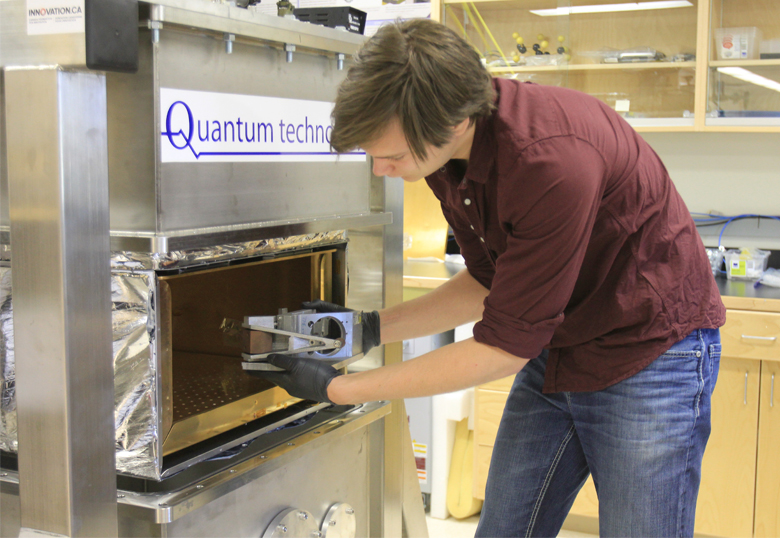The University of Lethbridge’s new cryogenic test facility (CTF) has allowed researchers in Dr. David Naylor’s astrophysics lab to be more productive, more energy efficient and more flexible.
“It’s working exactly as intended. It’s great,” says Naylor, a U of L physics and astronomy professor and Board of Governors Research Chair. “I do have to thank the Canada Foundation for Innovation, the province, and the manufacturer, Quantum Technologies.”

The CTF, which cost slightly more than $375,000, allows U of L scientists to test instruments to ensure they work in extreme cold before they are sent into space. Before the new CTF was installed, the U of L was capable of testing only smaller instruments in its fleet of cylindrical cryostats. Typically, individual components are tested in laboratories around the world before being integrated in a major space agency facility.
The new CTF can accommodate instruments about the size of a large toaster oven, enabling whole instruments to be tested at once. The CTF will help position the U of L for participation in future space astronomy missions. Naylor’s team has previously designed and built instrumentation that has gone into space so the CTF, along with U of L expertise, will expand the laboratory’s capacity.
“I would say that the CTF has increased our productivity by a factor of 10. It allows us far more flexibility and enables us to try different things out,” says Naylor. “It can achieve temperatures 10 times colder than the universe and it uses no liquid helium consumable.”
Instruments heading into space must be able to operate at 4 Kelvin (-269 C). Naylor’s group is currently testing a Fourier transform spectrometer (FTS), an instrument that measures the far infrared universe and the kind of instrument Naylor says is being considered for the next generation of space missions.
Ian Veenendaal, a graduate student, has been closely involved with the building and installation of the CTF and now with its operation.
“We will be delivering a report to the Canadian Space Agency at the end of the year and we are working to show that we are capable of building an FTS and operating it at 4 Kelvin,” says Veenendaal.
